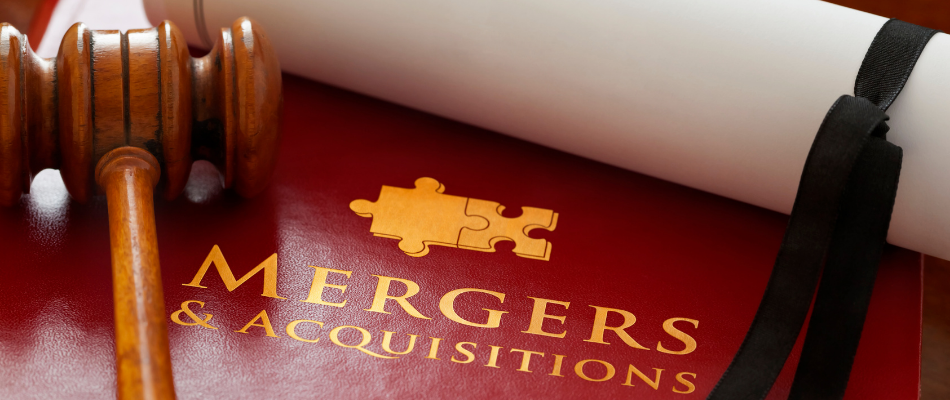Even now, in a time of economic downturn, mergers and acquisitions still take place. It seems that many people are enthralled at the prospect of joining two organisations and coming up with something bigger, better and of greater value.
Track record of M&A deals
Statista, the statistics aggregator, reports that over one million merger and acquisition (M&A) deals have been completed globally over the past 35 years. But Business Chef reports that up to 90% of mergers and acquisitions fail. What can be done to limit the chances of failure of a merger or an acquisition?
Who wins in an M&A deal?
The motives behind a merger or an acquisition can be varied. It can be practical, psychological (ego of a CEO), or opportunistic (a once-off event in the market). Many mergers look good on paper but often fail to deliver on expectations because the expected cost savings did not materialise, the disposal of assets did not deliver the expected value, or close-to-the-wind tax arrangements were frustrated.
Typically, the folk who put an M&A deal together come from a hard, quantitative background. There is little sentiment or emotion here. The focus is on the numbers. The criteria they select include profit to earning ratios, share price fluctuations, due diligence studies and an assessment of the track record of the management teams. Studies of M&A deals have confirmed that the undisputed beneficiaries of M&A deals are those who sell their shares when the price goes up at the announcement of the deal. Other beneficiaries include the bankers, lawyers and management consultants who advise the deal.
 Why do M&A deals fail?
Why do M&A deals fail?
The usual after-the-fact reasons why M&A plans fail include the following:
- The buying company pays an excessively high price for the target company. A subsequent downturn can cause earnings and value to plummet.
- There is a poor strategic fit between the two organisations. The initial numbers look good but the different work processes and structures do not lend themselves to a merged, efficient organisation.
- A merger or acquisition may often fail to deliver the expected economies of scale. This may be because the analysis and advisors had insufficient background on which to base informed decisions.
- Sudden deterioration in market and economic conditions after the deal can have a devastating effect, as this often destroys the logical premise on which the deal was based.
When some or all these factors combine, the effect on the emerging organisation can be disastrous.
The underlying cause of failure
A deeper analysis of M&A failure reveals some important insights.
An M&A process is a time of uncertainty in both organisations. Top talent may leave for other organisations, taking their deep institutional knowledge with them. The threat of a merger or acquisition can have a devastating effect on employee morale; employees are concerned about their future careers and their future earnings. Productivity goes down, there is more stress in the organisation and overall efficiencies take a hammering. Staff turnover goes up, more absenteeism is recorded and there may be instances of sabotage or petty theft.
The causes of unsuccessful mergers or acquisitions can be put down as the following:
- Insufficient attention was paid to merging the respective cultures of the two companies. Management thought things would sort themselves out as people got to know each other.
- Skills transfer between newly merged work teams can be a significant challenge. People with deep intuitional knowledge refrain from sharing as they consider that this will dilute their power in the new organisation.
- Employees are demotivated because of the changes and the uncertainty surrounding the changes. There is plenty of scope of unforeseen consequences.
- Management put all their efforts into concluding the deal, but not enough time after the deal to make sure that the organisational integration was taking place.
- In some cases, the emphasis of management can be diverted to internal matters. The focus on the customer and customer service takes a knock and customers find other suppliers.
- Post-merger conflict between senior managers from the two companies can derail the process, unsettle staff, and keep attention away from the importance of running the business.
Cultural compatibility
The cultural compatibility between the two organisations is a powerful determinant of M&A success. However, this seldom shows up in the detailed quantitative analysis prepared by the advisors to the deal. After all, their fees depend on the deal going through.
The stronger, more dominant partner in the deal must accommodate the new team members. The less dominant partner in the deal must surrender cherished processes and symbols to be assimilated. Without a supportive environment, this is unlikely to take place.
In conclusion
Despite deep analysis, lengthy reports and complicated spreadsheets, many mergers and acquisitions fail. The complex financial, technical, operational, and legal issues focus on getting the deal done and not on the post-deal integration requirements. The best M&A deals depend more on what is done after the deal than on what takes place before.








